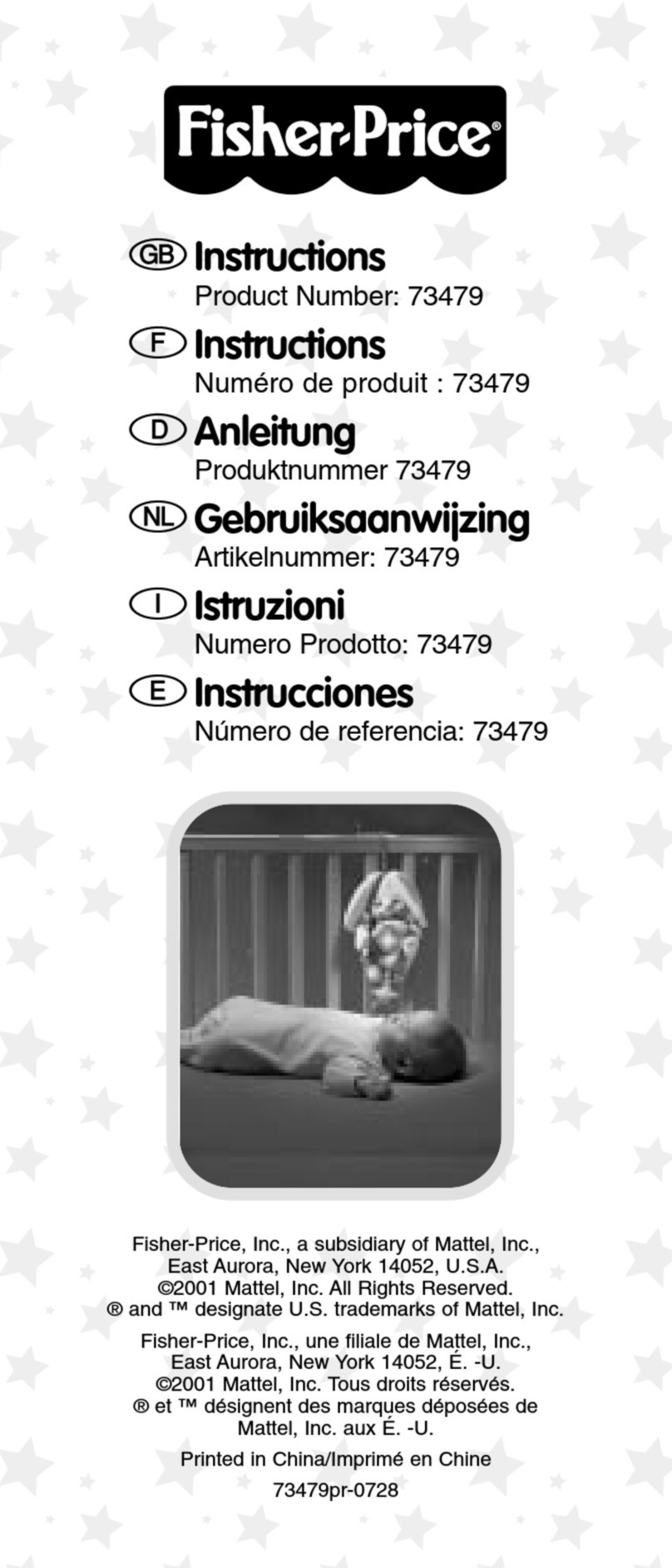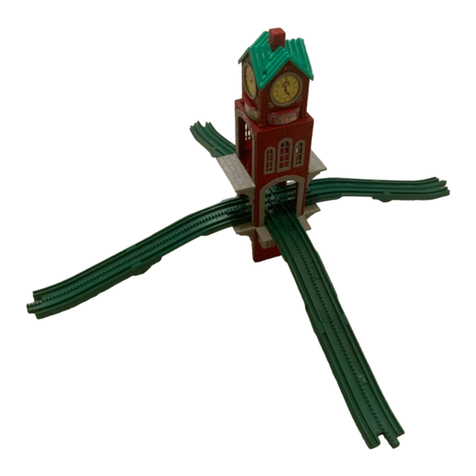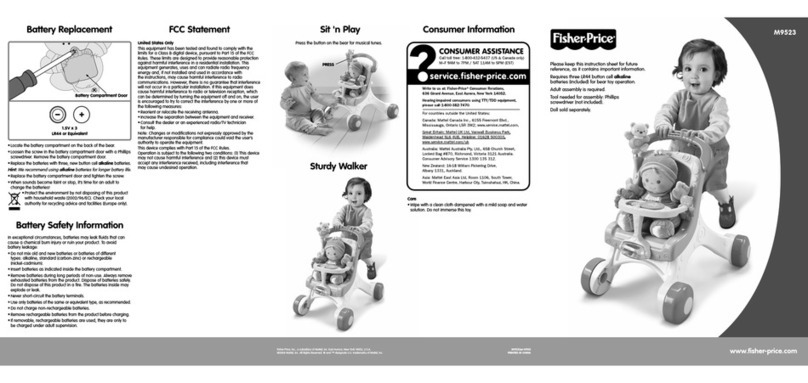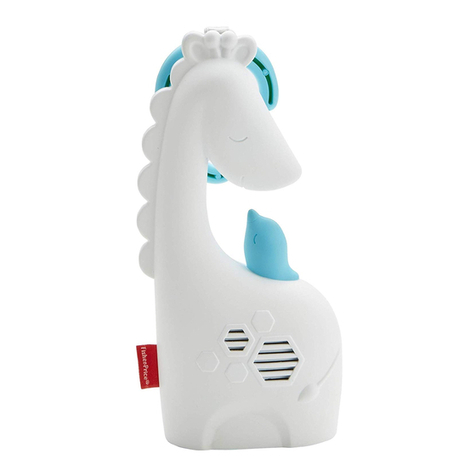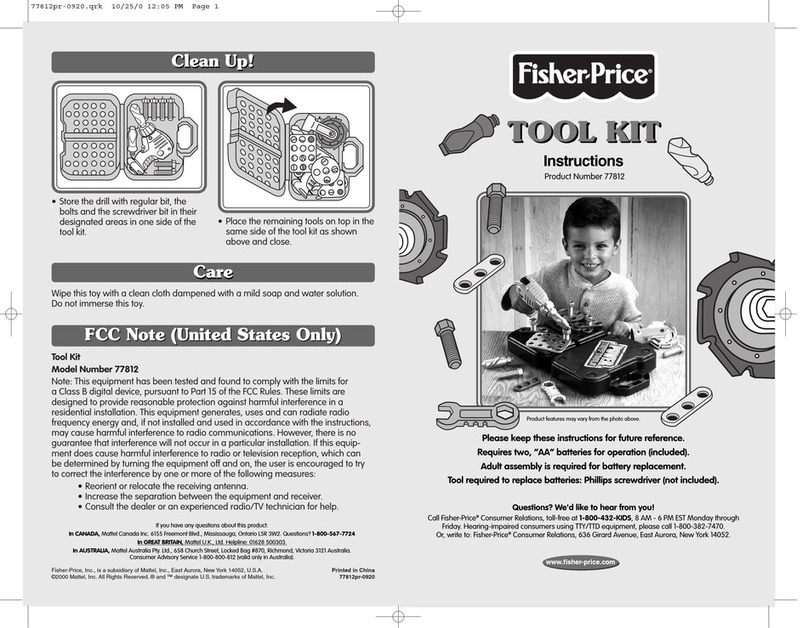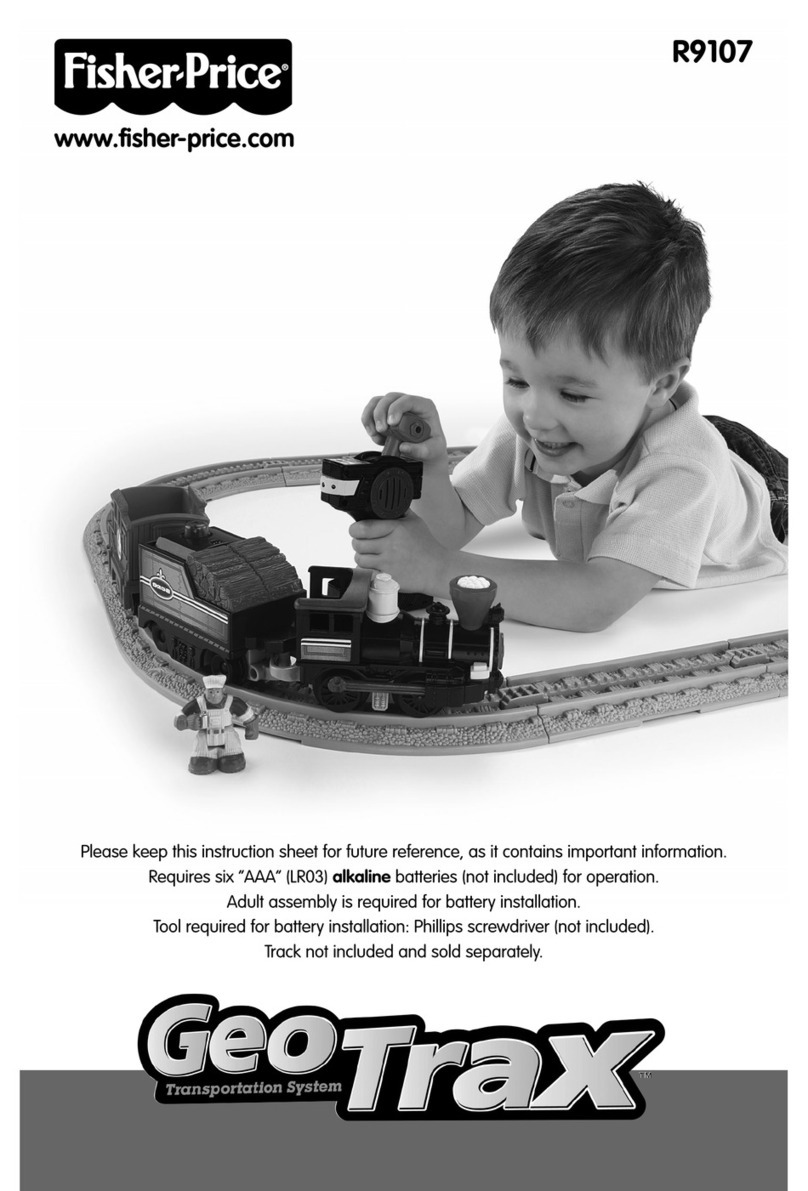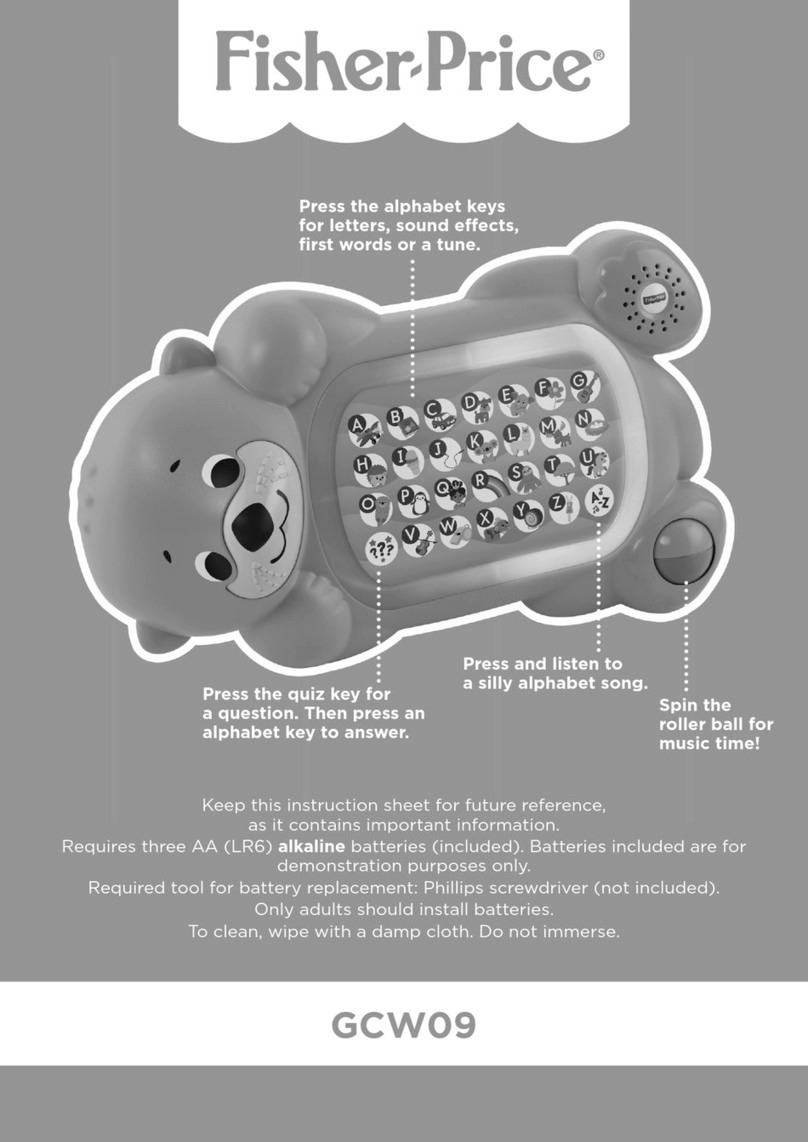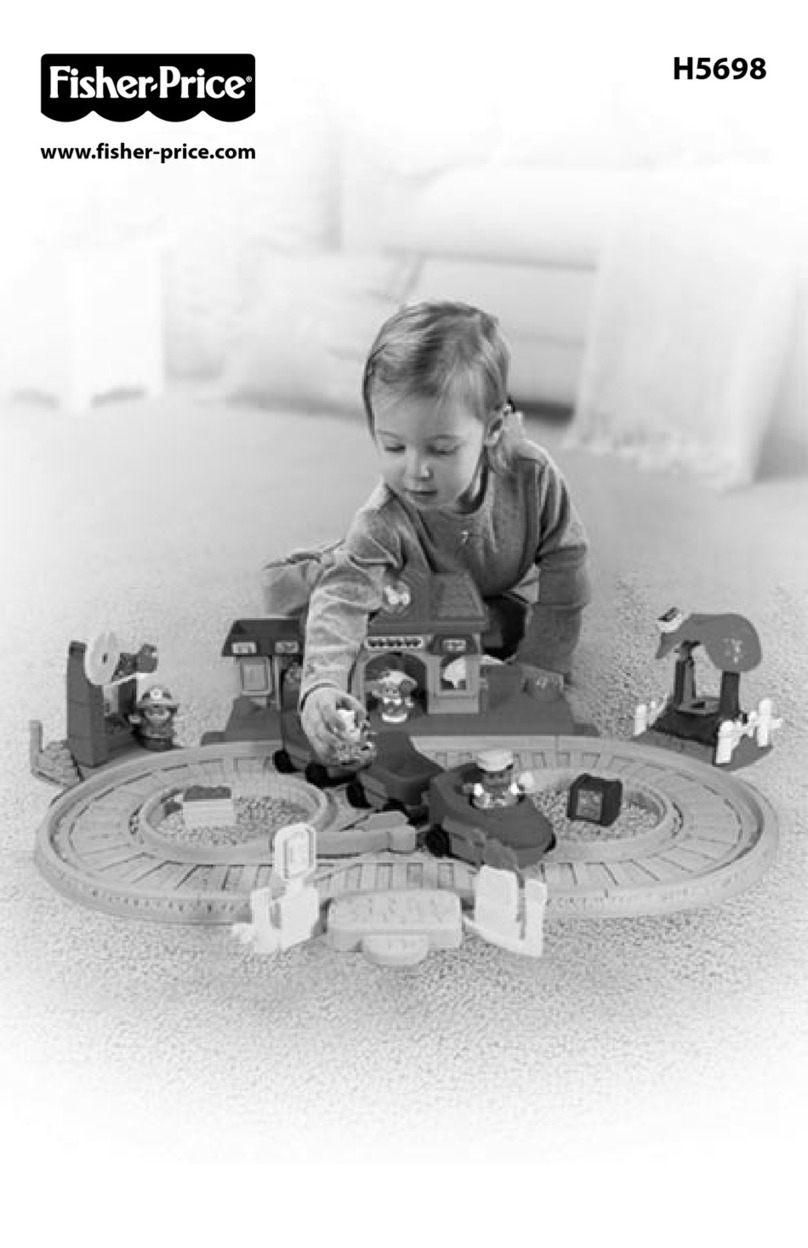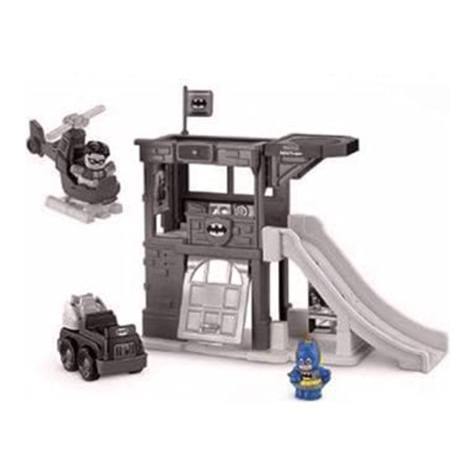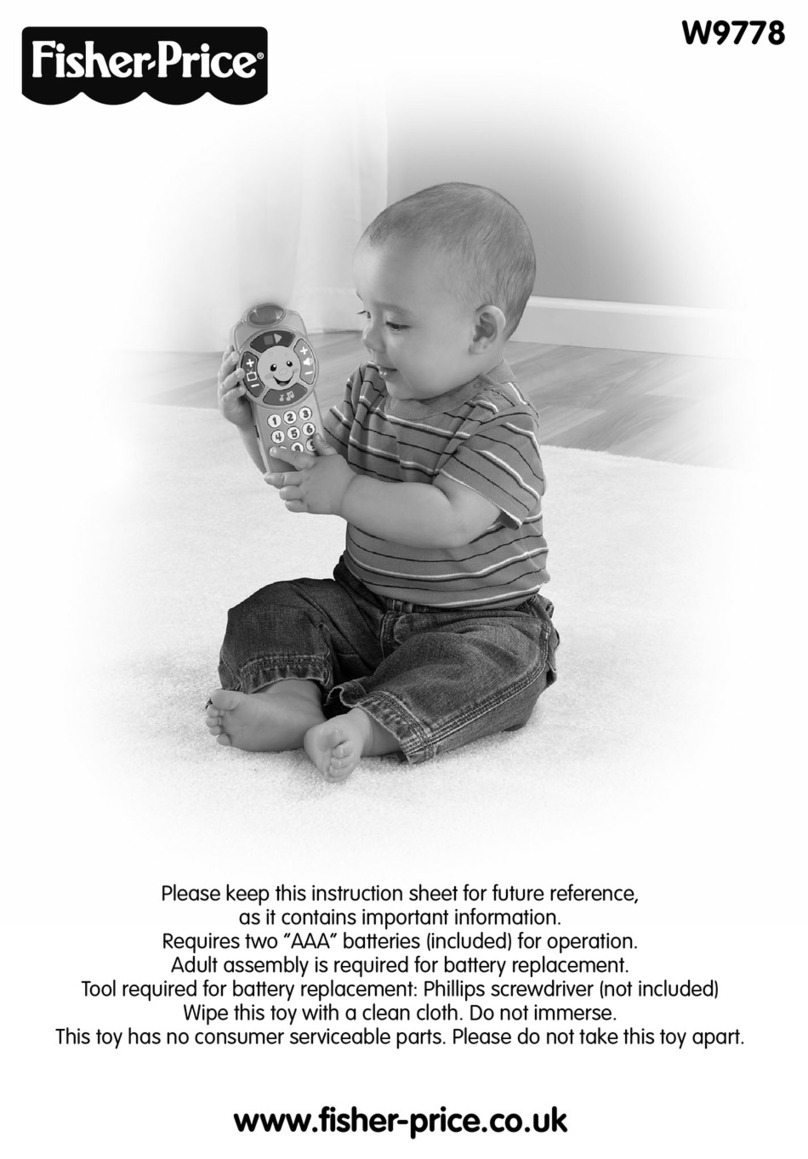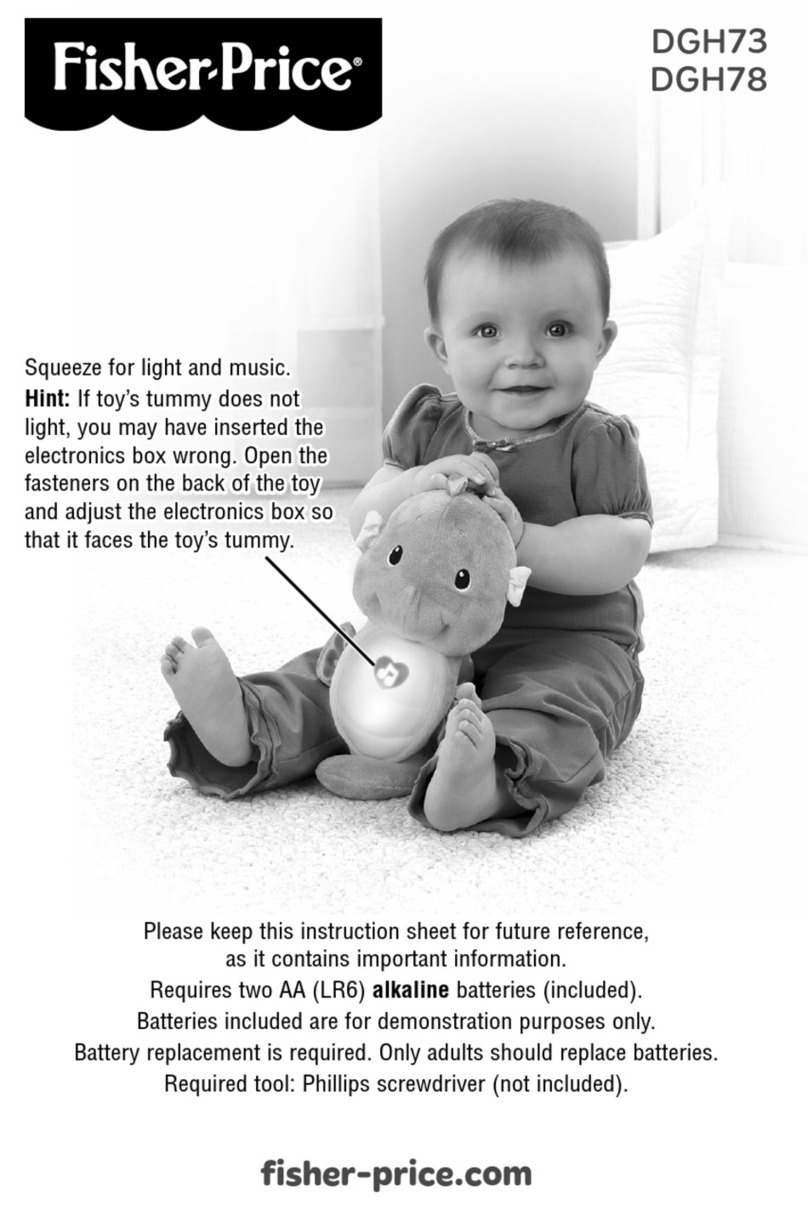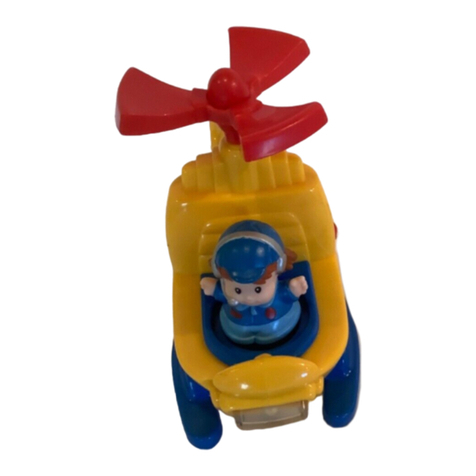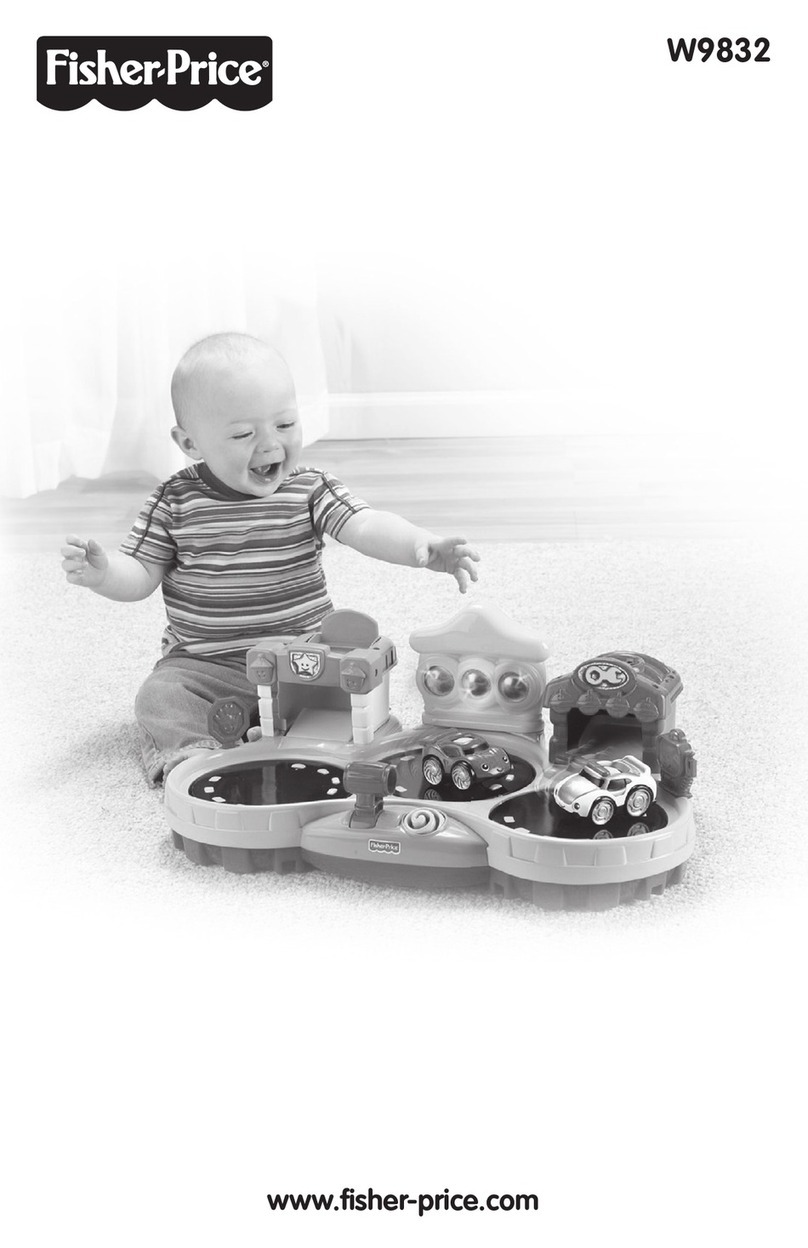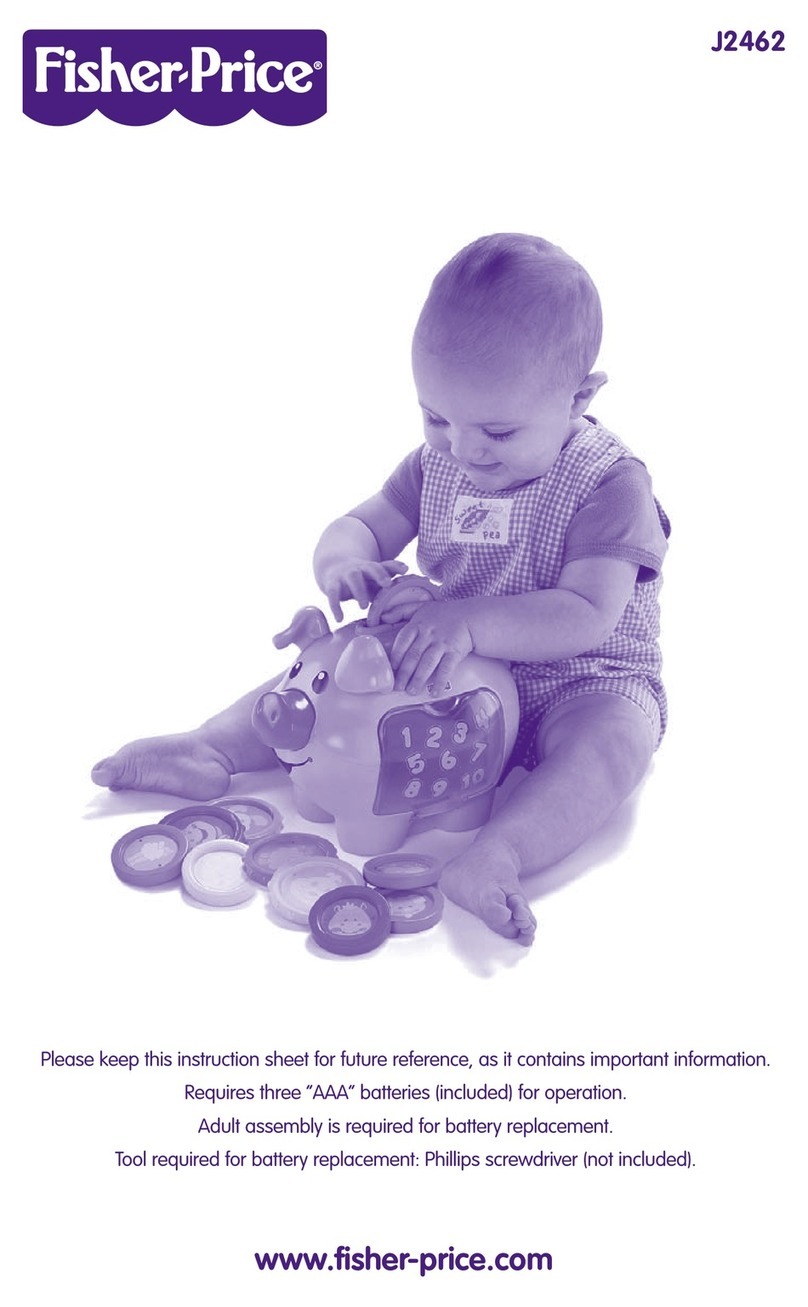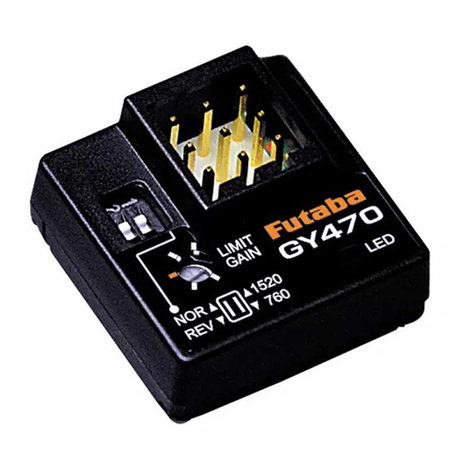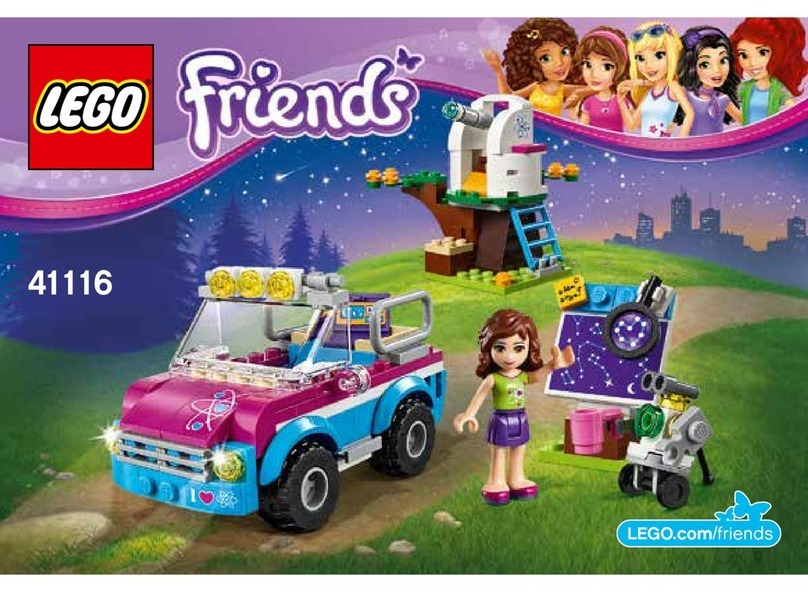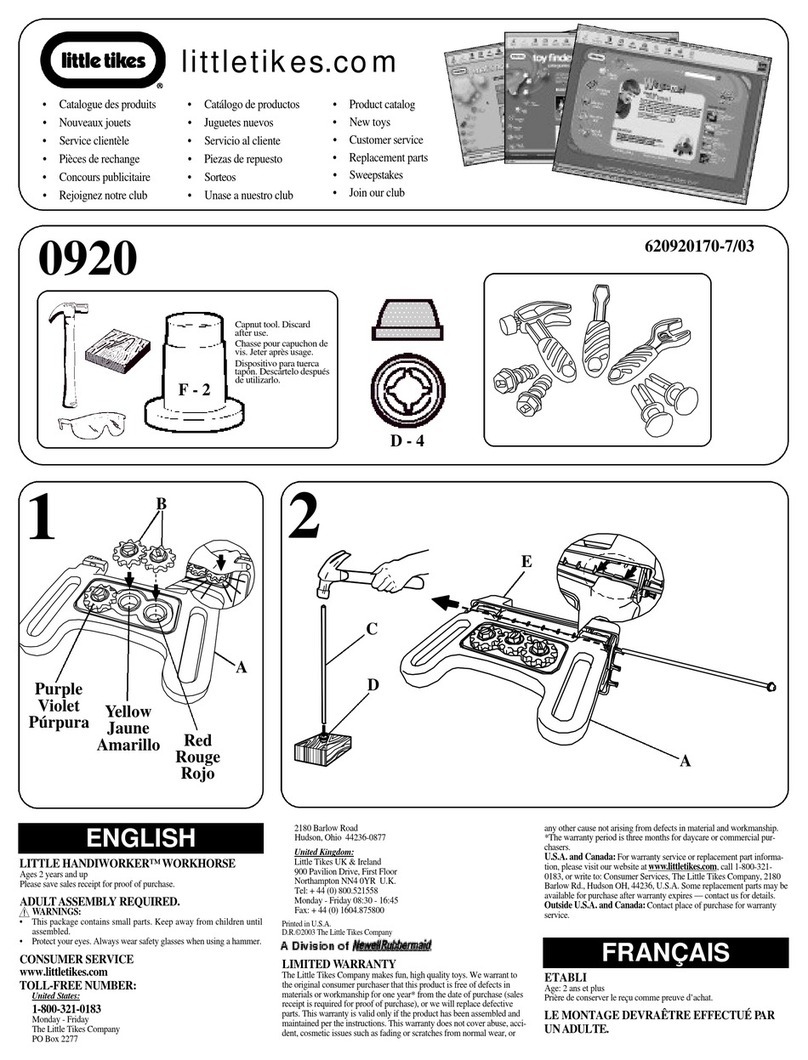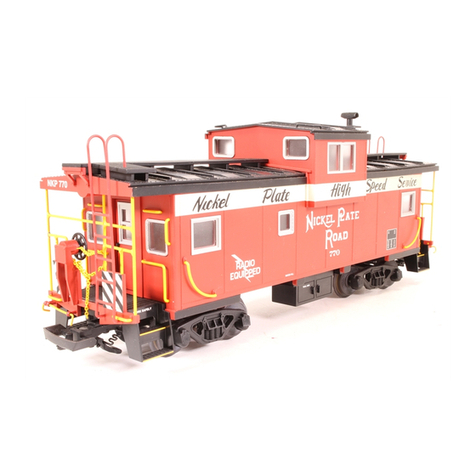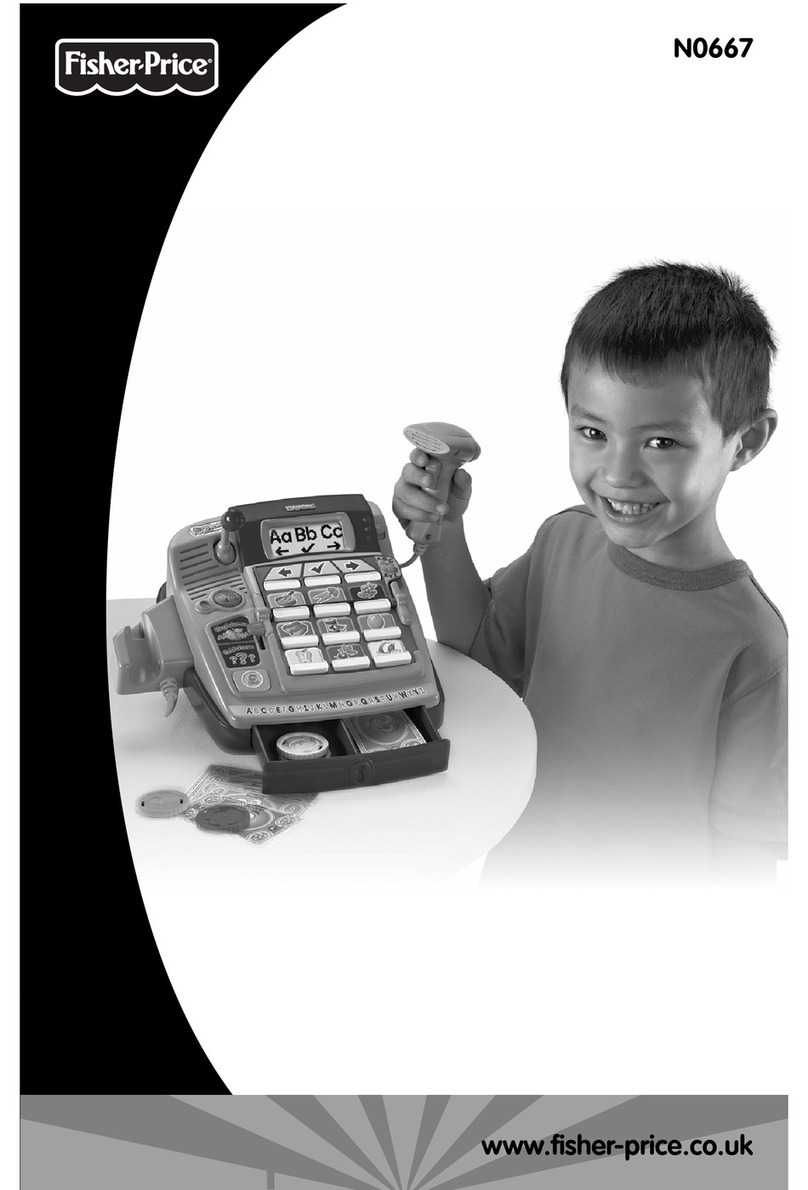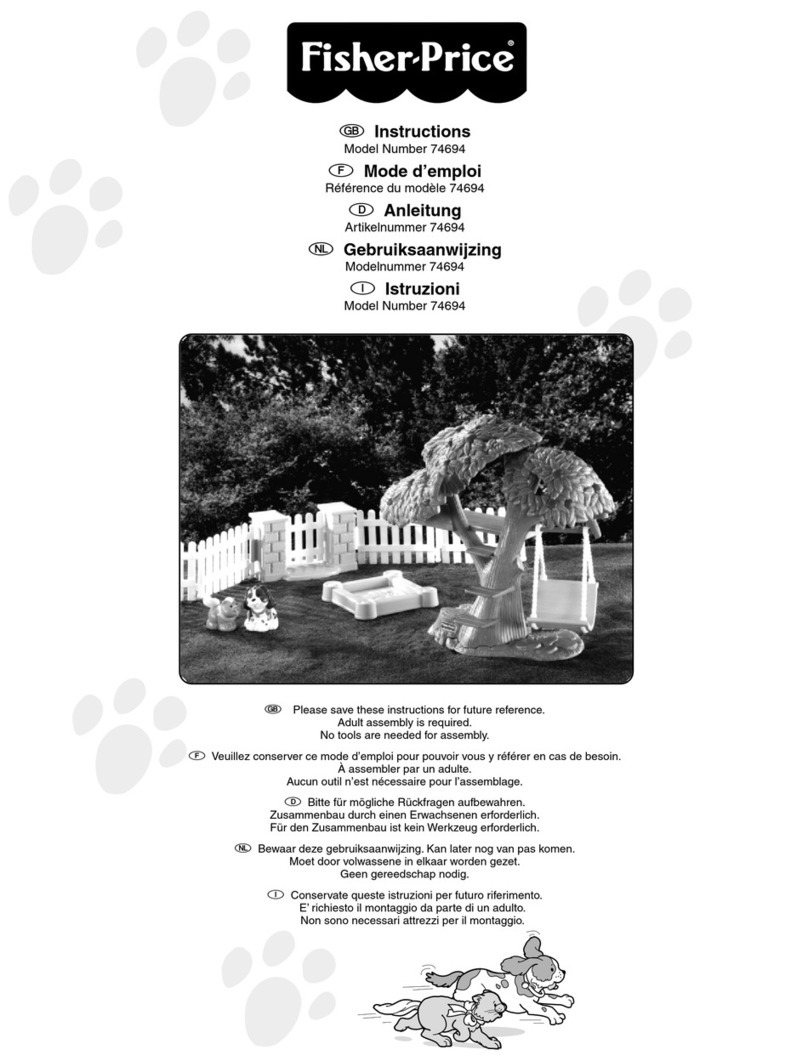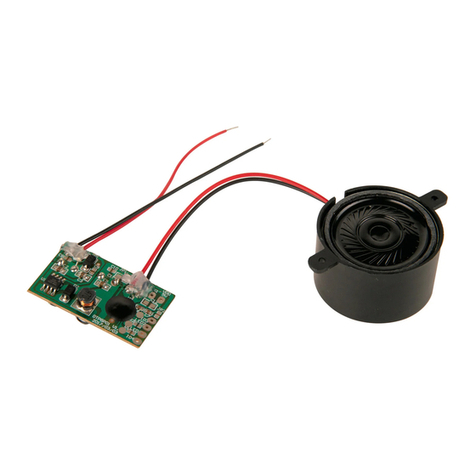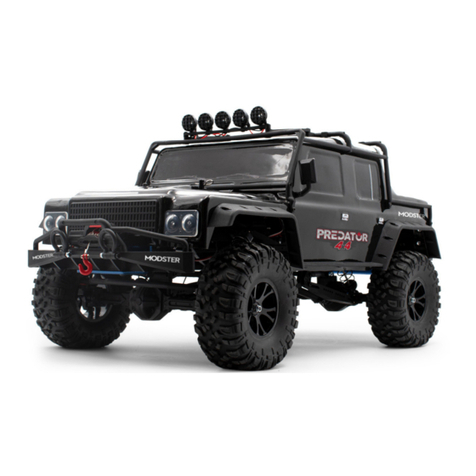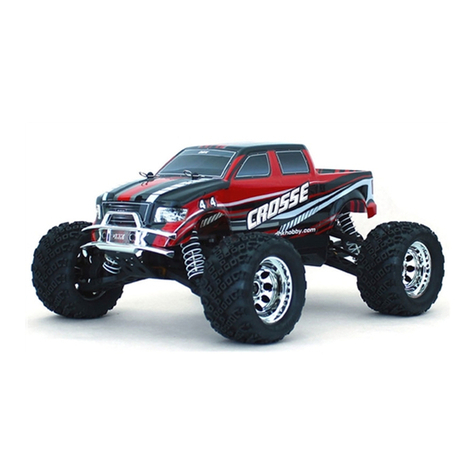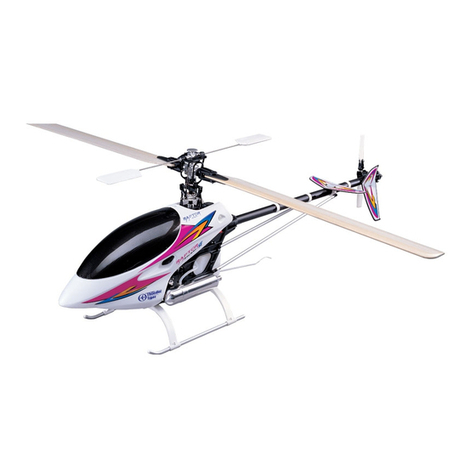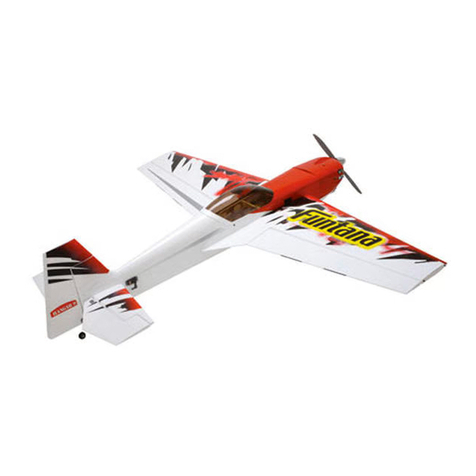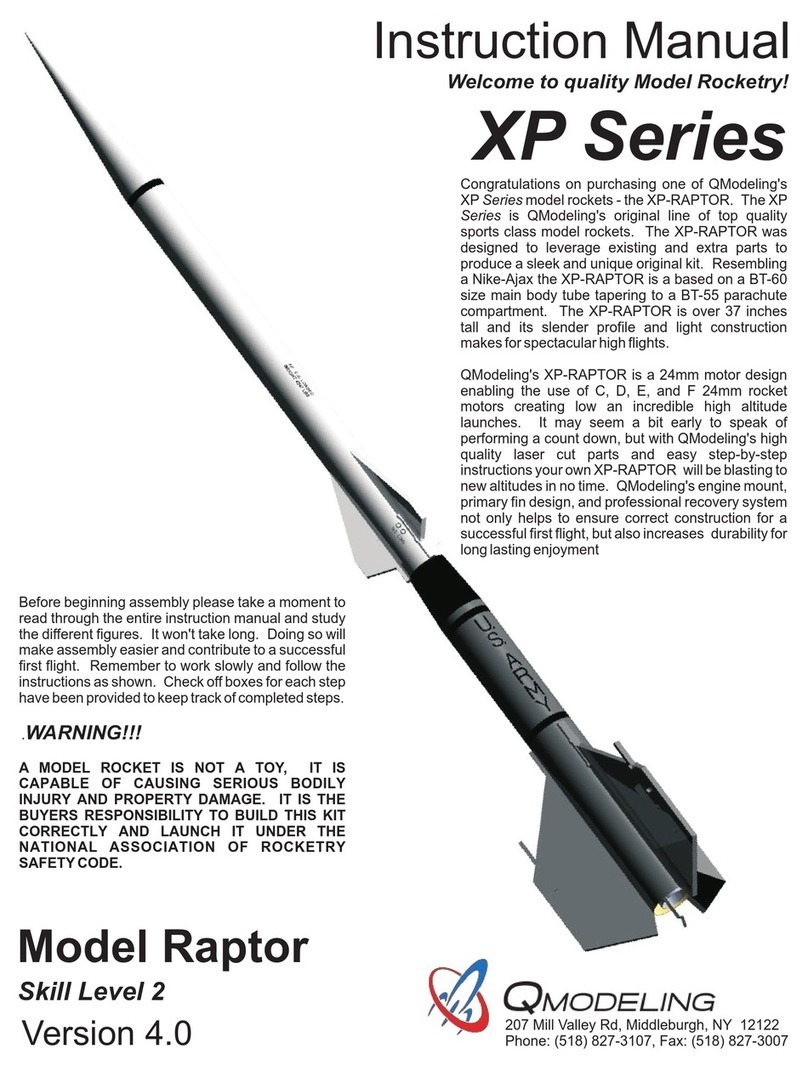
For best performance, we recommend replacing the batteries that came
with this toy with two, new “AA” (LR6) alkaline batteries.
• Locate the battery compartment on the bottom of the vehicle.
• Loosen the screw with a Phillips screwdriver and remove the battery
compartment door.
• Remove the exhausted batteries and throw them away.
• Insert two, new “AA” (LR6) alkaline batteries.
• Replace the battery compartment door and tighten the screw. Do not over-tighten.
• If this toy begins to operate erratically, you may need to reset the electronics.
Remove the batteries and replace them in the toy.
• When sounds from this toy become faint or stop, it’s time for an adult to
change the batteries.
Battery Replacement
• Protect the environment by not disposing of this product with
household waste (2002/96/EC). Check your local authority for
recycling advice and facilities (Europe only).
1.5V x 2
"AA" (LR6)
Battery Safety Information
FCC Statement
In exceptional circumstances, batteries may leak fluids that can cause
a chemical burn injury or ruin your product. To avoid battery leakage:
• Do not mix old and new batteries or batteries of different types:
alkaline, standard (carbon-zinc) or rechargeable (nickel-cadmium).
• Insert batteries as indicated inside the battery compartment.
• Remove batteries during long periods of non-use. Always remove exhausted
batteries from the product. Dispose of batteries safely. Do not dispose of
product in a fire. The batteries inside may explode or leak.
• Never short-circuit the battery terminals.
•
Use only batteries of the same or equivalent type, as recommended.
• Do not charge non-rechargeable batteries.
• Remove rechargeable batteries from the product before charging.
• If removable, rechargeable batteries are used, they are only to be charged
under adult supervision.
(United States only)
This equipment has been tested and found to comply with the limits for
a Class B digital device, pursuant to Part 15 of the FCC Rules. These limits
are designed to provide reasonable protection against harmful interference
in a residential installation. This equipment generates, uses and can radiate
radio frequency energy and, if not installed and used in accordance with
the instructions, may cause harmful interference to radio communications.
However, there is no guarantee that interference will not occur in a particular
installation. If this equipment does cause harmful interference to radio or
television reception, which can be determined by turning the equipment off
and on, the user is encouraged to try to correct the interference by one or
more of the following measures:
• Reorient or relocate the receiving antenna.
• Increase the separation between the equipment and receiver.
• Consult the dealer or an experienced radio/TV technician for help.
Note: Changes or modifications not expressly approved by the manufacturer
responsible for compliance could void the user’s authority to operate the
equipment. This device complies with Part 15 of the FCC Rules. Operation is
subject to the following two conditions: (1) This device may not cause harmful
interference and (2) this device must accept any interference received,
including interference that may cause undesired operation.
